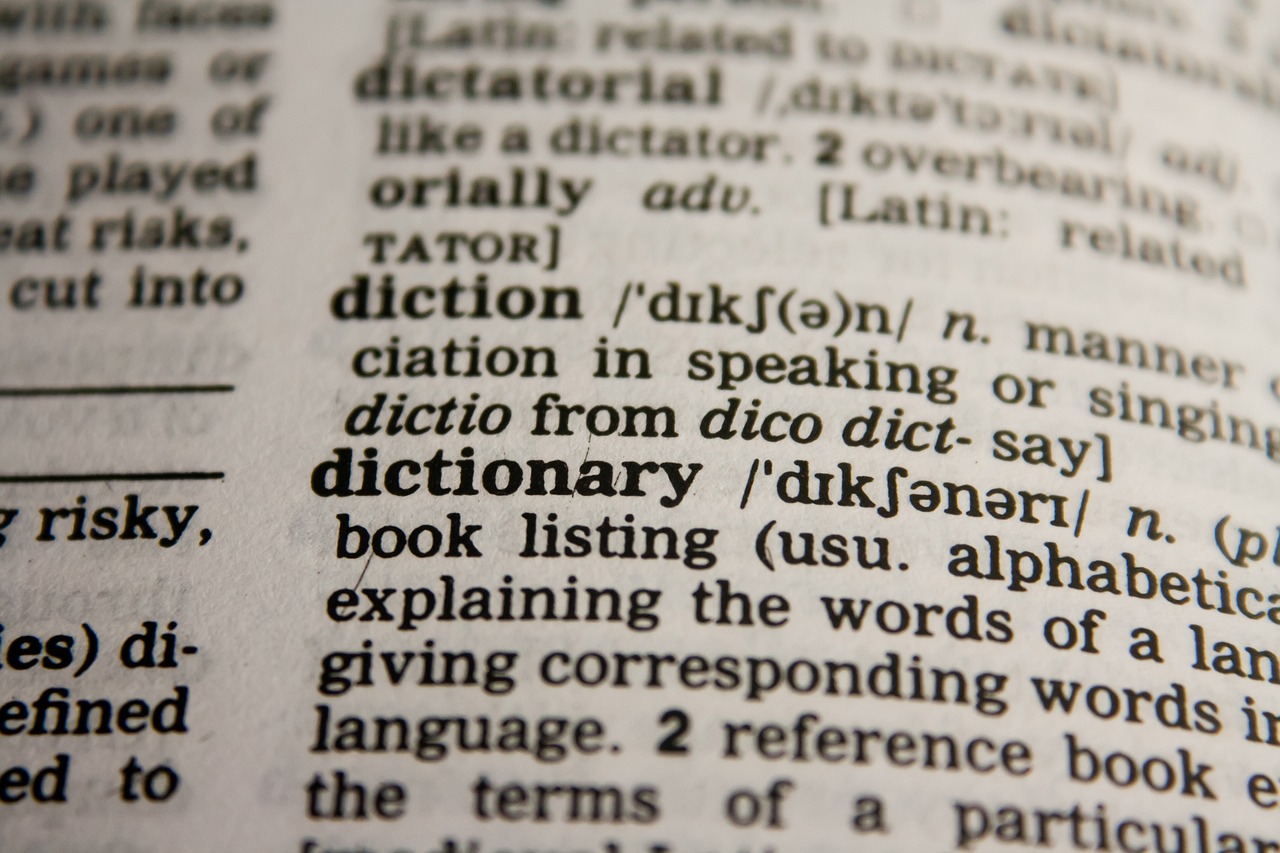
今回は、前置詞ですね。
前置詞は、まず基本的なイメージをしっかりとマスターしましょう。
そのうえで、実際の英語に多くふれて、感覚をつかんでいくといいでしょう。
場所を示す前置詞
- in: 閉じられた空間や場所の内側にあるイメージ
- She is in the office. (彼女はオフィスにいます。)
- She left her keys in the car. (彼女は車の中に鍵を置き忘れました。)
- on: 面や表面に接しているイメージ
- The book is on the table. (本はテーブルの上にあります。)
- The book I’m looking for is on the shelf next to the window. (私が探している本は、窓の横の棚に置いてあります。)
- at: 特定の場所や位置にあるイメージ
- We will meet at the restaurant. (私たちはレストランで会います。)
- The event will take place at the community center. (そのイベントはコミュニティセンターで行われます。)
- near: 近くにあるイメージ
- The grocery store is near my house, so I can walk there. (そのスーパーマーケットは私の家の近くにあるので、歩いて行けます。)
- Our hotel is located near the beach, so we can easily walk there. (私たちのホテルはビーチの近くにあり、そこへ簡単に歩いて行けます。)
- around: 周りを囲んでいるイメージ
- We walked around the old town, exploring its narrow streets and historic buildings. (私たちは古い町を歩き回り、狭い通りや歴史的な建物を探索しました。)
- The kids ran around the playground, playing tag and laughing. (子どもたちは遊び場を駆け回って、鬼ごっこをして笑っていました。)
- among: (3つ以上のものに)周りを囲まれているイメージ
- We walked around the old town, exploring its narrow streets and historic buildings. (私たちは古い町を歩き回り、狭い通りや歴史的な建物を探索しました。)
- The café is located around the corner from the main street, so it’s a bit hidden but worth finding. (そのカフェは主要な通りの角にあります。少し隠れていますが、探す価値があります。)
- between: 2つのものの間に存在する状態を指す。
- The negotiations took place between the two companies to reach a mutually beneficial agreement. (双方に利益をもたらす合意に達するため、交渉は両社の間で行われました。)
- The workshop will be held between 10 AM and 2 PM, so please make sure to attend during that time frame. (ワークショップは午前10時から午後2時まで行われますので、その時間枠内に参加してください。)
- through:空間を通り抜ける状態を指す。
- We walked through the park and enjoyed the beautiful scenery. (私たちは公園を歩いて、美しい景色を楽しみました。)
- The new highway allows drivers to travel through the mountains much faster than before. (新しい高速道路によって、運転手は以前よりもずっと速く山々を通行できます。)
- along: 平行に沿っているイメージ
- We followed the path that led along the river, enjoying the scenic views on both sides. (川沿いに続く道をたどり、両側の風景を楽しみました。)
- She walked along the hallway, looking at the paintings displayed on the walls. (彼女は廊下を歩きながら、壁に展示された絵を見ていました。)
- in front of: ある物の前にあるイメージ
- The children were playing in front of the house, enjoying the sunny weather. (子供たちは家の前で遊んでいて、晴れた天気を楽しんでいました。)
- The statue stands proudly in front of the town hall, symbolizing the city’s history and heritage. (その像は市庁舎の前に誇らしげに立っており、市の歴史と遺産を象徴しています。)
- behind: ある物の後ろにあるイメージ
- The book you’re looking for is behind the vase on the shelf. (あなたが探している本は、棚の花瓶の後ろにあります。)
- The car suddenly stopped behind the bus at the traffic light. (車は突然、信号でバスの後ろに停止しました。)
- over: 対象を乗り越えてかぶさるようなイメージ
- The plane flew over the city, offering a breathtaking view of the skyline. (飛行機は市街地の上を飛んでいき、スカイラインの息をのむような景色を見せてくれました。)
- The bridge collapsed during the storm, sending debris tumbling over the edge into the river below. (その橋は嵐の最中に崩壊し、がけから川へと瓦礫が転がり落ちました。)
- under: ある物の下にあるイメージ
- The cat hid under the bed during the thunderstorm. (猫は雷雨の間、ベッドの下に隠れていました。)
- The treasure was buried deep under the sand on the deserted island. (宝物は無人島の砂の下に深く埋まっていました。)
- above: 元の位置より高い所にあるイメージ
- The moon shone brightly above the horizon, casting a soft glow. (月が地平線の上で輝いており、柔らかな輝きを放っていました。)
- The airplane soared above the clouds, making its way to its destination. (飛行機は雲の上を飛び、目的地に向かっていました。)
- below: 元の位置より低い所にあるイメージ
- The temperature dropped to freezing below zero during the cold winter night. (寒い冬の夜、気温は氷点下に下がりました。)
- The divers explored the colorful coral reef below the surface of the ocean. (ダイバーたちは海の表面の下にあるカラフルなサンゴ礁を探検しました。)
- off: もとの場所から離れるイメージ
- She brushed the dirt off her clothes after playing in the muddy field. (彼女は泥だらけのフィールドで遊んだ後、服の汚れを払いました。)
- The boat gently pushed off from the dock and sailed into the open sea. (船はドックから優しく離れ、開けた海に航海しました。)
- into: ある空間の中に入るイメージ
- The magician transformed the hat into a bouquet of flowers with a wave of his hand. (マジシャンは手を振ることで、帽子を花束に変えました。)
- The explorers ventured deep into the jungle, discovering new species of plants. (探検家たちは密林の奥深くに進み、新種の植物を発見しました。)
- beside: すぐそばに並んでいるイメージ
- The old oak tree stood tall beside the farmhouse, providing shade and shelter. (古いオークの木が農家のそばに背高く立ち、日陰と避難所を提供していました。)
- The children sat beside each other, sharing stories and laughter around the campfire. (子供たちはお互いに隣り合って座り、キャンプファイアの周りで話や笑いを共有しました。)
- by: ある物との間に少しの差があるイメージ
- The park is located by the river, providing a beautiful view of the water. (その公園は川のそばに位置しており、美しい水辺の景色が楽しめます。)
- The bakery is situated by the main entrance of the mall, making it easily accessible to shoppers. (そのパン屋はモールのメインエントランスの近くに位置しており、ショッピング客に簡単にアクセスできます。)
時間を示す前置詞
- in: 月や年、季節が続く
- My birthday is in June. (私の誕生日は6月です。)
- She completed her project in two weeks. (彼女は2週間でプロジェクトを完成させました。)
- on: 特定の日や曜日が続く
- We have a meeting on Monday. (私たちは月曜日に会議があります。)
- The workshop will take place on December 15th. (ワークショップは12月15日に行われます。)
- at: 特定の時間を続く
- The movie starts at 7 PM. (映画は午後7時に始まります。)
- The webinar is set to begin at 10 o’clock sharp. (ウェビナーは10時に正確に始まる予定です。)
- through: 同じ状態が続いて一定の時間を経過するイメージ。
- We will be on vacation from Monday through Friday next week. (来週の月曜日から金曜日まで休暇を取ります。)
- The conference will be held from 9 AM through 5 PM. (カンファレンスは午前9時から午後5時まで開催されます。)
- before: 時間的にある事実より先におきるイメージ。「~の前に」。
- Please complete the report before the end of the day. (今日の終わりまでにレポートを完成させてください。)
- The presentation needs to be submitted before the deadline. (プレゼンテーションは締め切り前に提出する必要があります。)
- after: 時間的にある事実より後でおきるイメージ。「~の後で」。
- We had lunch after the meeting. (私たちは会議の後に昼食をとりました。)
- The workshop will take place on Monday, and a follow-up session will be held after it. (ワークショップは月曜日に行われ、それに続くセッションが行われます。)
- during: 期間中を示す
- I read a book during the flight. (飛行中に本を読みました。)
- We ask for your cooperation during the maintenance period. (メンテナンス期間中はご協力をお願いします。)

scheduled という単語は、特に将来の予定を述べるときは「scheduled for ~」とするのが文法的には正しいとされています。もっとも、そこまで気にせず、for の代わりに, at や on を利用するネイティブも少なくありません。
The presentation is scheduled for 2:30 PM tomorrow.
The presentation is scheduled for Monday next week.
方向を示す前置詞
- to: 目的地に向かって移動し到達するイメージ
- He gave a gift to his sister for her birthday. (彼は妹に誕生日のプレゼントを贈りました。)
- The road leads to the beach, offering a scenic route for travelers. (その道路はビーチへと続いており、旅行者に美しいルートを提供しています。)
- from: 起点を出発するイメージ
- I received a letter from my friend. (友達から手紙を受け取りました。)
- The train departs from platform 3. (列車は3番ホームから出発します。)
- towards: 特定の方向を指すイメージ
- The cat ran towards the garden. (猫は庭の方向に走りました。)
- The team is working diligently towards completing the project ahead of schedule. (チームはプロジェクトを予定より早く完成させることに向けて一生懸命取り組んでいます。)
- for: 目的や目標に向かっている最中の(まだ到着していない)イメージ
- I bought a gift for my mom. (私は母のためにプレゼントを買いました。)
- The company organized a charity event for raising funds to support local schools. (その会社は地元の学校を支援するための資金調達のためにチャリティイベントを開催しました。)
- against: 反対の方向を向いている、対立しているイメージ
- The protesters marched against the government’s new policy. (抗議者たちは政府の新政策に対してデモ行進をしました。)
- He argued strongly against the proposed changes in the project plan. (彼はプロジェクト計画の提案された変更に強く反対意見を述べました。)
- up: 上に向かっている又は起点より上にあるイメージ
- The hiker climbed up the steep mountain trail to reach the summit. (ハイカーは急な山道を登り、頂上に到達しました。)
- He rolled up his sleeves and started working on the construction site. (彼は袖をまくり上げて工事現場で働き始めました。)
- down: 下に向かっている又は起点より下にあるイメージ
- The kids ran down the hill to catch the rolling ball. (子供たちはボールを追いかけるために丘を駆け下りました。)
- The temperature has gone down significantly since yesterday. (気温は昨日からかなり下がりました。)
- across: 平面を横切るイメージ
- They walked across the bridge to reach the other side of the river. (彼らは川の向こう側に行くために橋を渡りました。)
- She found the book she was looking for in a bookstore across the street. (彼女は向かいの本屋で探していた本を見つけました。)
関係や状態を示す前置詞
- of: 所有(ある物の一部)や起源を示す
- The cover of the book is blue. (その本の表紙は青いです。)
- The aroma of freshly baked bread filled the air, making everyone’s mouths water. (焼きたてのパンの香りが空気に充満し、皆の口をさらに渇かせました。)
- with: 一緒にある、関連があることを示す
- She came with her brother. (彼女は兄と一緒に来ました。)
- She decorated the cake with colorful frosting and edible flowers. (彼女はケーキをカラフルなアイシングと食べられる花で飾りました。)
- by: 方法や手段を示す
- The report was sent by email. (その報告書はメールで送られました。)
- The masterpiece was painted by a renowned artist, capturing the beauty of the landscape. (その名作は、一流の芸術家によって描かれ、風景の美しさを捉えていました。)


